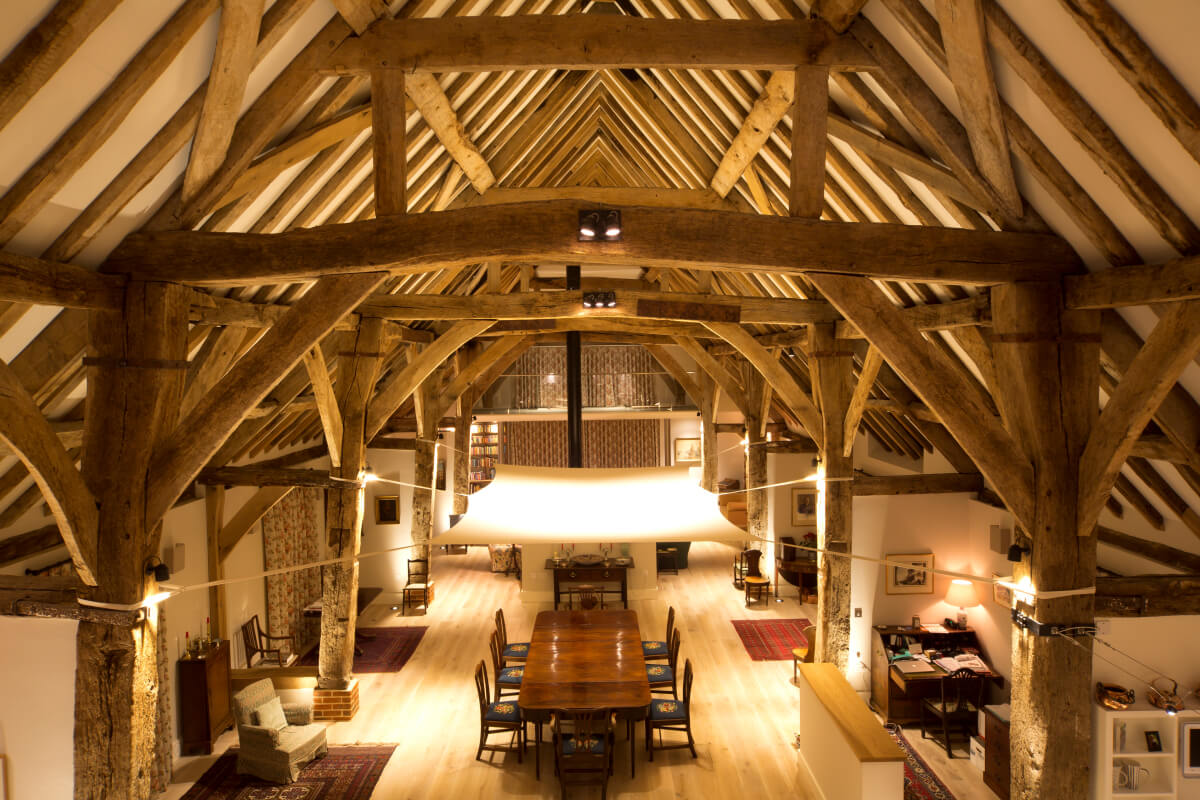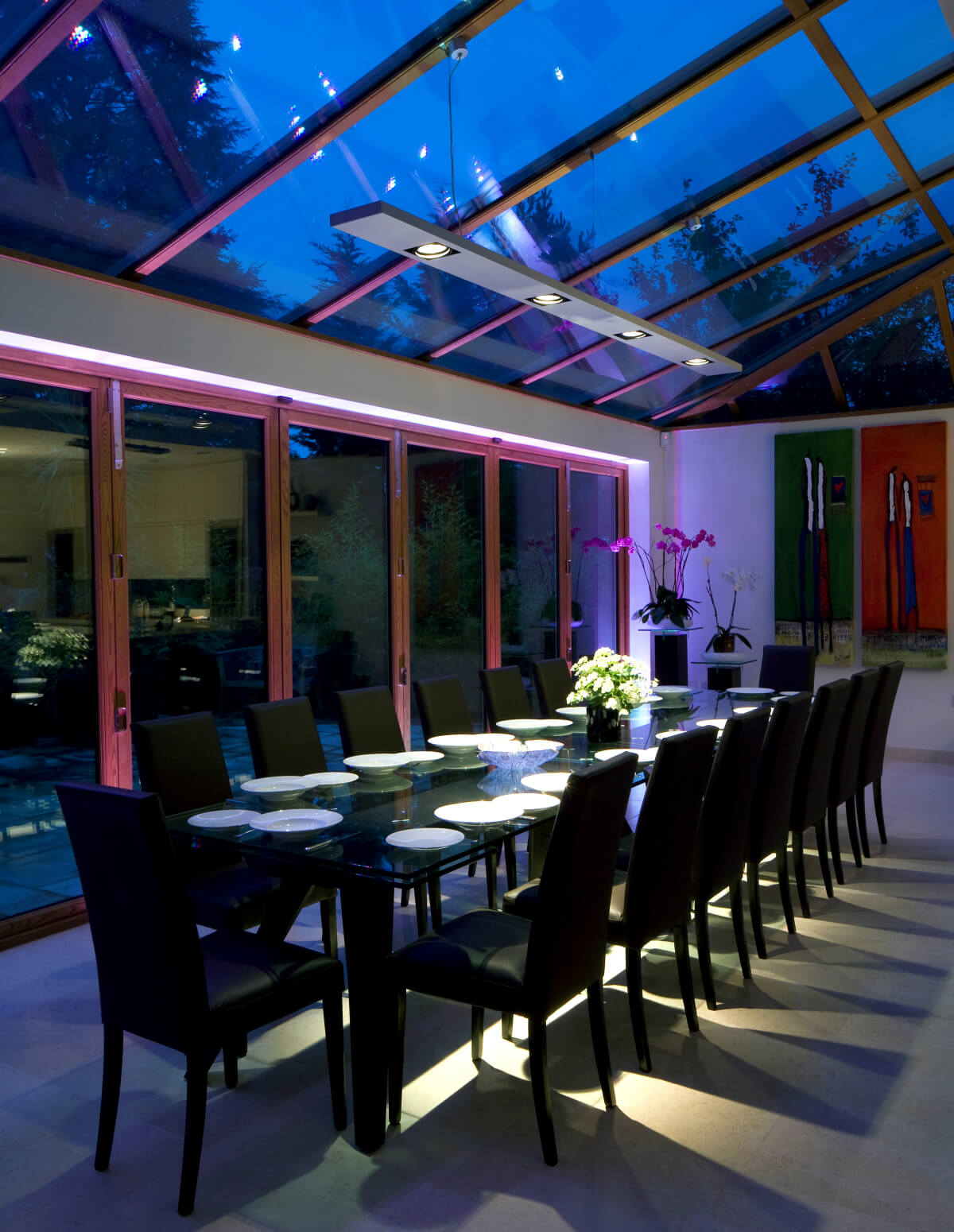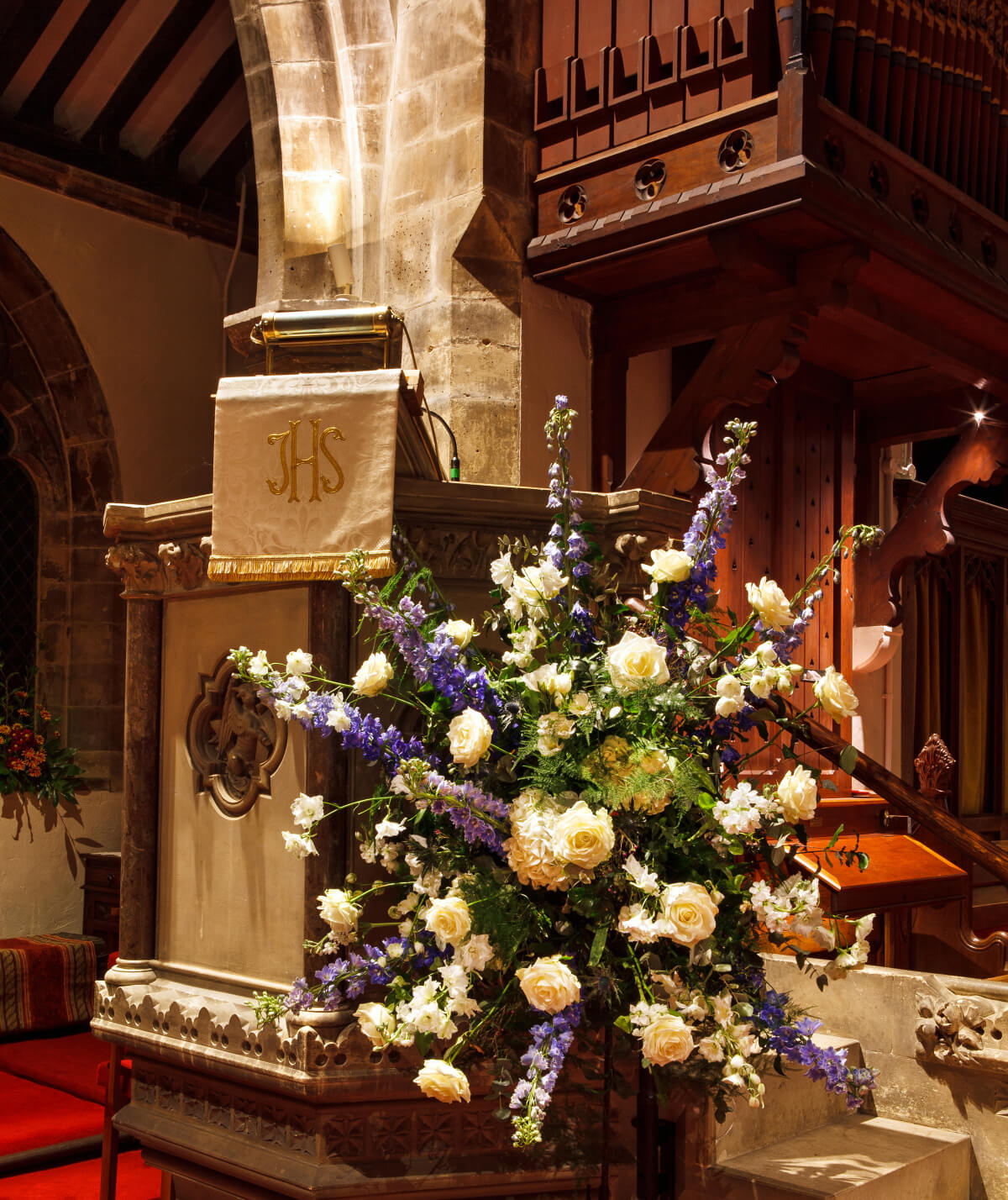Using surface mounted light fittings
In this post we’re focusing on architectural surface mounted light fittings. That’s quite a mouthful so let’s break it down a bit more. Architectural surface mounted light fittings blur the line between purely decorative fittings like chandeliers and hidden workhorses like the recessed downlight. An architectural fitting is doing something more than being simply decorative. It’s doing a job, maybe lighting a specific area or creating a particular effect. Surface mounted fittings are more visible too so they’ve got to look good while doing it.
Why use surface mounted light fittings
Surface mounted light fittings can help solve problems with fixing points. If you need a flexible spotlight and can’t recess anything into a ceiling or a wall, an adjustable surface mounted spotlight might give you what you need. Having a surface mounted alternative is a great escape route when you’ve got limited ceiling void or no void at all. It’s not just a lack of void that might be a restriction; we don’t recommend recessing fittings into insulation. It’s not good for either.
Older buildings present their own challenges. They often have the same issue with limited voids and that that can be accompanied by vaulted ceilings. This listed barn we worked on in Hampshire was a huge space but one with incredibly limited fixing points. The unique character of the barn meant minimising disruption to the beams that make the building so significant.

Surface mounted fittings on custom brackets deliver light where it’s needed without damaging the fabric of the barn. Clever custom brackets clamp round the beams in the kitchen area. They support a track lighting system which gives great task lighting over the food preparation area.
Surface mounted fittings have the advantage of being able to put light in exactly the right spot. This dining area is a wonderfully, naturally light space in the day. It’s almost entirely glass which means very limited fixing points. Custom mountings designed in collaboration with the glazing company allowed us to put a discreet aluminium profile in exactly the right location over the dining table.

The fitting here isn’t a traditional “decorative” fitting; it’s an architectural fitting doing a specific job. It’s surface mounted because that was the best way of getting great lighting over the dining table in this particular instance.
The importance of understanding fixing methods
You don’t necessarily have to go down the route of developing custom brackets or custom mounting points. Architectural surface mounted light fittings often come with a variety of fixing methods as standard. The Air fitting illustrated below is an example of a range of fittings based around the same light engine and body but with a variety of fitting options to suit different circumstances.

Each variant offers a different fixing option to suit different circumstances. Connections can be made behind a flat plate surface mounted or semi-recessed and plastered-in. Connections can be made in the plate or rose itself or the whole driver can be integrated into the ceiling box making for a convenient though more bulky integrated unit. The same basic body can be used a flush fixed fitting or feature as a pendant or even as part of a track lighting system.
Things to watch out for when using surface mounted fittings
So surface mounted light fittings are flexible and are great for lighting problematic areas, but what are the watch outs?
One consideration is cost. Designing with surface mounted fittings is likely to be more expensive than with recessed ones. Comparing like-for-like using LED fittings that share the same light engine show that a surface mounted fitting might be 25-50% more expensive. That’s on a like-for-like basis but things might be more subtle than that. It might be cheaper and better to use a slightly more expensive surface mounted light fitting in the right place than spend money on trying to engineer an appropriate, more recessed solution.
The second consideration is appearance. Surface mounted fittings are simply more visible. Again, there are steps we can take to mitigate that. Take a closer look at the surface mounted fittings in a Grade I listed church we worked on in 2015.

Working with the manufacturer we were able to specify the fittings by RAL colour that matched the stone. This flexibility meant we were able to almost “hide” the fittings in full view. It demonstrates how surface mounted fittings can still be a really discreet solution.
Surface mounting can require more thought up front as to exactly what you’re going to use, and how the cabling architecture is going to work. For example, most recessed fittings can have any drivers or control gear required hidden in the void space behind. In that situation you just take a 240v cable (plus whatever dimming signal cable is required) to each location. Surface mounted integral LED fittings are generally much smaller and neater if the driver is remote rather than incorporated in to the fitting. Typically the driver can’t be installed next to the fitting, so the cabling architecture has to bear this is mind.
The last thing to bear in mind when specifying surface mounted fittings is that they are less forgiving of mistakes. You’re cabling to a more exposed, potentially more visible location. So, it’s important to think about what is happening around it and getting the other elements of the interior design resolved. Planning early, precisely and involving the rest of the team working on your space is critical.
Browse architectural surface mounted light fittings on our online store
We’ve made a selection of some of the surface mounted light fittings we use available here. The Air range we’ve talked about earlier offers a variety of fixing alternatives and a flexible accessory system. If there’s something that you’re looking for and you can’t find it, give us a call on 01845 525664.
